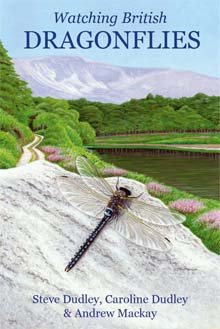
The Great Fen Wind Farm Project has started! These are two of the eight new wind turbines recently installed on Glass Moor between Pondersbridge and Ramsey Mereside in the the Fens. Where's the rest?
Here is a copy of the article I was asked to write for no. 379 of the Cambs Bird Club Bulletin.
Birder’s Eye View
Too much wind and not enough substance.
I’ve been invited to ‘expand’ on comments I made on Cambirds when local birders were discussing the massive topic of renewable energy and its contribution to combating global climate change. Wow! How much time have we got?!
In April, Rowena Langston (RSPB) and myself organised the British Ornithologists’ Union (BOU) annual conference entitled ‘Wind, Fire and Water: Renewable Energy and Birds’. Why did we focus on renewables? Why did we not open the conference to all alternative energy generation? Global climate changes is a huge subject, and when you only have a weekend to debate a topic, its easier to remain focused and deal with bite-sized chunks! The BOU had already held a conference on a climate change related issue in 2002, and its effect on coastal environs and their birds. So this time around we again kept it to a single issue within the wider climate change debate.
This article is a personal view, as a birder, conservationist and energy consumer and does not represent the views of my employer, the BOU, or the Cambridgeshire Bird Club.
Renewable energy is the term used to describe energy that is generated from resources such as wind, water (tidal and wave action), biomass material (the processing of material grown specifically for energy generation or the processing of waste material from some crop production). The majority of proposed renewable energy generation will come from harnessing wind using the installation of wind turbines (wind farms), with the rest coming from smaller-scale energy generation technology such as water energy generation (increased hydro development (freshwater) and the offshore development of wave and tide technology) and bioenergy (the growing and cropping of crops such as oilseed crops for the production of liquid fuels for transport needs, or utilising wood (including coppice material) and straw for the generation of electricity and heat/or heat). Wind power is the only technology sufficiently progressed to make any real contribution to the UK’s overall energy generation by the government target date of 2010 with bioenergy likely to be the second largest contributor (for more information on wind energy see the recent article on ‘birds and wind farms’ in British Birds (98: 194-204) and for a review of the recent BOU conference see the forthcoming article in British Birds (July issue))
Can an island nation with a wealth of wind and water (both inland and coastal) not harness nature in order to have a sustainable energy generation? The debate rages as to exactly what impact renewable energy generation can make to combat global climate change. Some say renewable energy is the future whilst others argue that the technology isn’t efficient and cannot meet our needs. If we look at our current energy consumption, it can be broken down as transport (33%), heat (365) and electricity consumption (31%). Our declining stocks of fossil fuel is responsible for nearly all transport and heat use (although a small percentage of heat is generated by electricity), so renewable energy generation can only contribute to about 40% (all electricity plus some heat) of the UK’s total energy consumption. By 2010 (the government’s target date) the aim is to have 10% of our total energy needs generated by renewable energy sources (= wind 7%, biomass 2%, landfill 1%, water (inc hydro) 0%). This compares to gas 41%, caol 26%, nuclear 19%, oil 1% and others 3%.
The UK’s renewable energy programme is unlikely to generate enough energy to make an impact globally, at least not when countries such as the US (the highest energy consuming nation on the planet) and others continue to contribute virtually nothing to the battle against climate change. So what will?
Costs aside, the only viable option in terms of efficient energy generation appears to be nuclear (projected to be 19% of UK energy generation by 2010). Nuclear however brings with it a mass of politically fuelled debates, even more than renewable energy generation! The cost of nuclear power is astronomical even compared to the billions which will be invested in renewable energy. Although the actual energy production is ‘green’ the waste from nuclear energy definitely isn’t. It is the safe disposal of nuclear waste which has seen the gradual run down of the British nuclear industry. Nuclear represents a long-term and significant contribution to combating climate change, but brings with it the huge long-term problem of safe waste disposal which may just end up being just as big a problem for the planet in the future as climate change is today. Another major political issue with nuclear is the proliferation of nuclear technology which has the potential of being used by some nations for the development of nuclear armaments. In a climate of non-proliferation of such technologies, and the western world’s fear of terrorist attack, this is possibly the biggest political problem to overcome for any administration attempting to establish a nuclear energy generation programme.
But aren’t we missing the point? Climate change is not caused by energy production but energy consumption. Typical of a western, capitalist, economy, we address problems by tackling the visible effects and not the cause of the problem. The problem is quite simple – we consume too much energy that produces too many emissions, which in turn contribute to global climate change. Greener and cleaner energy generation of whatever source will never combat climate change alone. At present we consume virtually all the energy we generate. Globally, the world holds very little in reserve, and locally it is practically non-existent.
And what of the huge number of new homes that are being built up and down the land? How energy efficient are they? Do they have solar power? Rain misers? They might be more energy efficient as an equivalent sized older home, but on average, each newly built home is only 50% as energy efficient as it could be (based solely on consumption and not on the energy it actually takes to build them – think of all that concrete!).
No, we are largely responsible for climate change. Not the energy generators. Not the politicians. Not America (although they are the biggest contributors to emissions responsible for the acceleration of climate change). The way we live our lives, and the energy we consume through our homes (central heating, lighting, cooking, electric goods, etc), our lifestyles (nearly everything we purchase requires energy to create it or package it), the disposal of our waste, and significantly, the way we move around – planes, trains and automobiles! Like it or not, even the greenest of us using energy saving light bulbs, recycling all we can and using solar power as part of our home’s energy supply, still consume vast amounts of energy elsewhere in our western lifestyle. It is estimated that we could halve our domestic energy consumption simply be being more energy efficient! But we choose not to.
It is also our western lifestyle that creates the NIMBY – not in my back yard – syndrome. It seems many people are willing to undertake some improvements in energy efficiency to their home and some to their lifestyles – taking public transport, commuting by pushbike, holidaying at home or at European destination without the need of a plane. But when it comes to the positioning of wind farms, well, say no more. Not near me please.
Well not me. I live on the open arable fen, and when asked if I would oppose wind farms being built in the fens, my response was immediate – bring them on! The fens are one of the windiest areas of lowland Britain, and whilst I remain unconvinced by the exact contribution renewable energy sources will deliver to our nation’s energy needs, I am still in favour of wind farms being built in wind-rich areas such as the fens.

Glass Moor wind farm - eight turbines so far and I'm looking forward to many more.
Sod the view! If we leave it to the NIMBY’s we won’t have a view in the long-term anyway, as the planet slowly chokes and dies (but not in our lifetime eh). No, rack ’em up! I see wind farms as not only a way of generating renewable energy, but also a means of conservation. Imagine replacing the current arable fen with a partly restored natural fenland landscaped looked over and guarded by wind turbines with limited human access because of the health and safety implications of an active wind farm area. Avoid the migration routes and major wintering wildfowl areas of the Ouse and Nene riverways, but replacing sugar beet, carrots and onions with reeds, meres and grassland really does appeal. Yes, wind turbines kill birds, agriculture has been a major cause of bird declines around the globe, and most of the arable fen doesn’t have many birds left thanks to agricultural intensification and with it the continued poisoning of wildlife that would otherwise flourish in these areas. Habitat restoration would surely increase bird populations to such levels that the loss caused by strikes with rotating wind turbine blades would still give us a significant net increase in bird populations. Not to mention the wider wildlife benefit, because lets face it, few plants, mammals and insects will ever be threatened by blades rotating relatively high above the ground. Studies already show that even along major coastal migration routes where wind farms have been positioned, birds are capable of taking evasive action and migrating around a farm. Migration during bad weather through these farms will certainly lead to increased mortality, but whilst the fens does have migration corridors (Ouse and Nene), large scale migration simply does not happen across the major land-mass of the arable fen, so the effect on migrating birds would be minimal, and the benefit to resident birds and wildlife populations is huge (as I suspect it would be for many migrant bird species too).
In order to think globally we need to act locally. Charity begins at home. Well, conservation of the planet does as well. As consumers we need to act now. We need to change our energy-gorging lifestyles (fewer twitches!) and object to the NIMBY revolution that is sweeping the land. If you’ll excuse me, I’m just going to cycle round my local patch and protest at the lack of wind farms viewable from my house. And at least I can see one wind turbine (the start of the great fen wind farm?) from my garden – can you?
Climate change is a natural planetary event. The earth experiences cooling and warming on a cyclic basis over many millennia. The industrialisation of our planet, in particular the last 100 years, is now accelerating this natural process. Whether we can, or should, do anything about this is up to us as individuals. Can we be bothered? And does it matter? It’s really up to you.
Images | Panasonic Lumix FZ-30 | © Steve Dudley









No comments:
Post a Comment